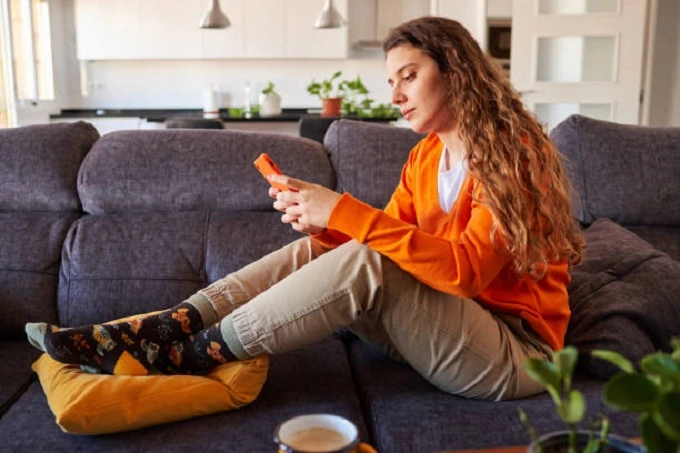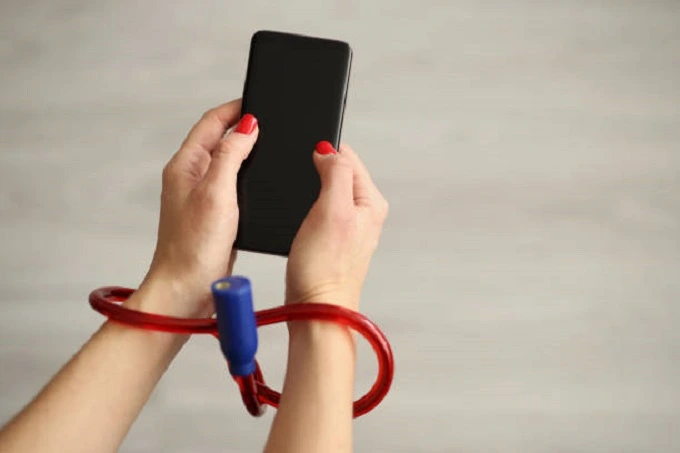Nomophobia: the fear of being without a phone

There have always been fears that have plagued humanity, even from the beginning of our species’ existence. These include phobias about the dark, insects, and other such things. And then some phobias have only been around for a relatively short period, like nomophobia, which is the fear of being completely cut off from one’s phone. The following paragraphs will explain what it is and why it poses a threat.
What is nomophobia, and how many people are affected by it

During a study in the United Kingdom in 2008 and commissioned by the United Kingdom Post Office, the term “nomophobia” was first used. Then mobile phones have already firmly established themselves in many people’s lives, even though there has not yet been an addiction comparable to smartphones in today’s society. The fear of being without a mobile phone is known as nomophobia, an abbreviation for the phrase “no mobile-phone phobia.”
The goal of the research was to investigate the concerns that come up for people who frequently use their mobile phones. During the study, over two thousand individuals were questioned. It was discovered that approximately 53 percent of all respondents experience anxiety whenever they lose their mobile phone or its battery runs out. And additionally, if there are insufficient funds in the account or there is no cellular network signal. In addition, this phobia was found to be more common among young boys and girls. Approximately 76 percent of respondents between 18 and 24 mentioned her in their responses.
Regarding gender, it was discovered that men are more likely to be anxious than women; approximately 58 percent of all respondents fall into this category, whereas only 42 percent of women are considered nomophobia. Anxiety was experienced by approximately 9 percent of people when the phone was turned off. In comparison, roughly 55 percent of people cited the inability to stay in touch with friends and family as the primary factor that triggered their phobia.
What are the most common symptoms of nomophobia?

The most noticeable symptoms include agitation, disorientation, trembling, excessive sweating, increased breathing due to stress, changes in breathing, increased breathing due to stress, trembling, and changes in breathing. Emotional symptoms are also recognized, including fear comparable to that felt by individuals when they are in potentially dangerous situations, panic, low self-esteem, loneliness, and depression.
What are the causes of nomophobia, and how do doctors and society perceive it
In the past, when the research was starting, it was thought that the cause of nomophobia was the inability to stay in touch with loved ones, such as when it was impossible to know where they were. Another reason was a person’s career, specifically their fear of failing to answer an important call and embarrassing themselves in front of their superiors or coworkers.
The most common explanation for the development of nomophobia in modern times is something that is referred to as dependence on social networks. In either case, the underlying fear mechanism is the same: the worry that one will be cut off from all means of communication. To this, the worry of being cut off from the flow of information was added; consequently, the loss of a smartphone for even a short period can induce a state of anxiety. Additionally, modern nomophobia is associated with particular personality traits, such as a strong need for reward, which results in a race for likes. This is an example of a personality trait associated with modern nomophobia.
When it comes to the scientific community’s perspective on nomophobia, many researchers are not inclined to classify the anxiety caused by the absence of a mobile phone as a phobia, much less as a more serious mental pathology. This is because they believe that nomophobia is more of an anxiety disorder than a phobia. As a result, no one considers nomophobia an addiction in the same vein as alcoholism or gambling. On the other hand, modern-day nomophobia is becoming more serious, affecting a significant portion of the population. Some instances can lead to nervous breakdowns and other mental problems that necessitate, at the very least, a consultation with a psychiatrist.
Who is most susceptible to nomophobia, and how is it diagnosed?
Because younger people are more reliant on technology than older people, they are more likely to suffer from nomophobia. This is in contrast to most other addictions and phobias, the reality of which is uncontested.
It is not difficult for an expert to determine whether or not a person suffers from an anxiety disorder known as nomophobia. This phobia is typically manifested in three ways: constantly checking one’s phone, even when nothing is happening; the growing anxiety when the battery gets closer to zero; and the fear of losing the phone, even for a brief time. A person also struggles with poor socialization or obsessive-compulsive disorder, which can worsen their phobia of random people.
How to get rid of nomophobia

According to medical professionals, nomophobia is a phenomenon that we pretend does not exist to avoid taking it seriously. The condition deteriorates further in the absence of therapy aimed at eliminating addiction. This results in increased time spent on the smartphone, increased isolation, an idea to set the instinct for self-preservation when, for instance, a person crosses the street while looking at the screen, and increased antisocial behaviour. In addition, those who have nomophobia tend to lead sedentary lifestyles and concentrate their eyes intently on a relatively small area of the surrounding environment, both of which are bad for their health.
When providing treatment, psychiatrists typically use one of two types of therapy. Interpersonal psychotherapy is the first modality on this list. The difficulties that patients are experiencing in their existing relationships with one another are the focus of this effort. During treatment, a relationship is forged between patients to end their antisocial behaviour and feelings of isolation. The cognitive-behavioural method is the second approach. It intends to change how people communicate with their mobile devices. This method can uncover unconscious motivations, and the beliefs and behaviours that contribute to a neurotic state can be changed.
To help patients maintain therapy, anti-anxiety medication may be prescribed. They help alleviate the growing sense of urgency and unease brought on by not having access to a smartphone in one’s possession.




